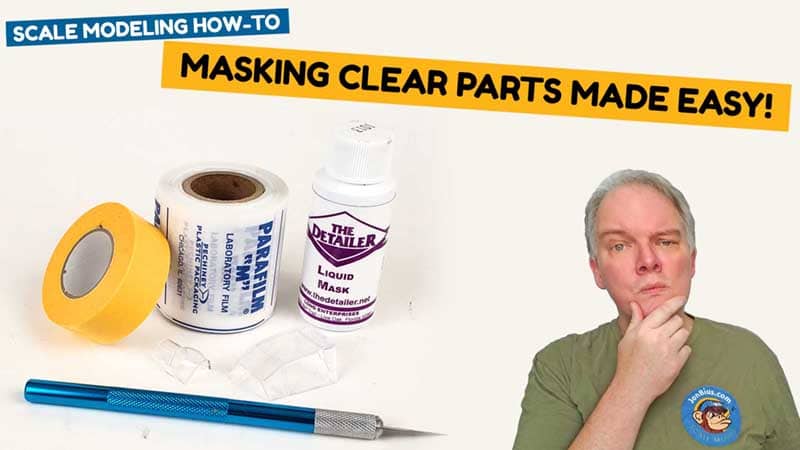Masking clear parts seems to be one of those tasks that modelers are either totally comfortable with, or they try to avoid it as if it were angry hornets.
Because I’d spent so many years working on aircraft, I had to get comfortable with it. It’s hard to build airplanes and NOT mask canopies!
In that time, I experimented with quite a few methods. Some I liked, some not so much. Eventually I settled on a core set of methods that work in just about any situation.
Masking clear parts – Slow and steady
I’d previously published a blog article about using Parafilm, which is still my favorite masking method. I also later released a video to demonstrate the method. However, there are many more methods.
As you’ll see in the video, trying several methods will be a very helpful practice. None of these need to be exclusive tools to have available. And most are within most modelers budgets.
The key to successful masking really comes down to practice and patience. In most cases, a rushed or imprecise attempt is the most likely culprit for problems. Slowing down, working carefully, and using a new knife blade will help greatly.
Most times when modelers contact me about this the problem turns out to be the knife blade. While they are quite sharp, most blades can dull quickly. They are not expensive to replace, so changing them often is an easy fix.
As with any skill in the hobby, practice is key. A great method for this is to use a “training” canopy to test with. Different materials can be used, and the process repeated often. Though the canopy may not be for a production kit, the practice will be quite beneficial. Before long you will find that you are masking master!


Leave a Reply